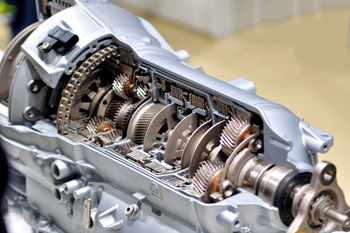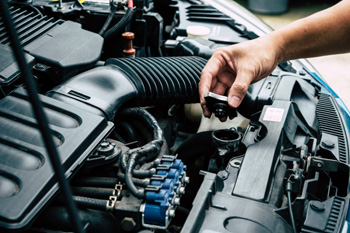Your vehicle’s transmission is one of the most important—and expensive—components under the hood. It’s responsible for transferring power from the engine to the wheels, allowing your car to move smoothly. When something goes wrong with the transmission, ignoring it can quickly turn a small repair into a major (and costly) problem. Recognizing the early warning signs can save you time, money, and the headache of a breakdown.

1. Slipping Gears
If your car suddenly changes gears without warning or struggles to stay in gear, that’s a classic sign of transmission trouble. You might feel your engine rev up without an increase in speed, or notice your car jerking while accelerating. This “slipping” sensation means the transmission isn’t maintaining proper control over gear shifts—something that needs immediate attention.
2. Delayed or Rough Shifting
A healthy transmission should shift gears smoothly and almost unnoticeably. If you experience hesitation, rough transitions, or shaking during gear changes, it’s a clear red flag. These symptoms could be caused by low transmission fluid, worn-out components, or even internal damage.
3. Unusual Noises
Grinding, whining, or clunking sounds are never good signs—especially if they happen when shifting gears or while the car is in neutral. These noises often point to worn bearings, gears, or other internal transmission parts that are starting to fail.
4. Leaking Transmission Fluid
Transmission fluid is crucial for keeping the system cool and lubricated. If you notice red, pink, or brown fluid under your vehicle, it’s likely a transmission leak. Low fluid levels can quickly lead to overheating and serious damage, so it’s important to have the leak checked and repaired right away.
5. Warning Lights on the Dashboard
Modern vehicles are equipped with sensors that detect transmission problems. If your check engine light—or a specific transmission warning light—comes on, don’t ignore it. Even if your car seems to be running fine, these lights can indicate early signs of trouble that could worsen over time.
6. Burning Smell
A burnt or sweet, smoky odor could mean your transmission fluid is overheating or old. When transmission fluid breaks down, it can’t properly lubricate or cool the components, leading to excessive wear and damage.
Don’t Wait—Get It Checked
Transmission issues rarely fix themselves, and delaying a repair can lead to complete transmission failure. If you notice any of these signs, it’s best to visit a trusted auto repair shop as soon as possible. A certified mechanic can diagnose the issue, replace worn parts, and keep your transmission running smoothly for years to come.
Your transmission is the heart of your vehicle’s performance—don’t ignore the warning signs. Schedule a professional inspection today and stay ahead of costly repairs.
Lim’s Auto Body is a full service auto body and mechanical repair shop locally owned and operated in Largo, Florida. For more information, go to our web site www.limsautobody.com or call (727) 422-3232.

